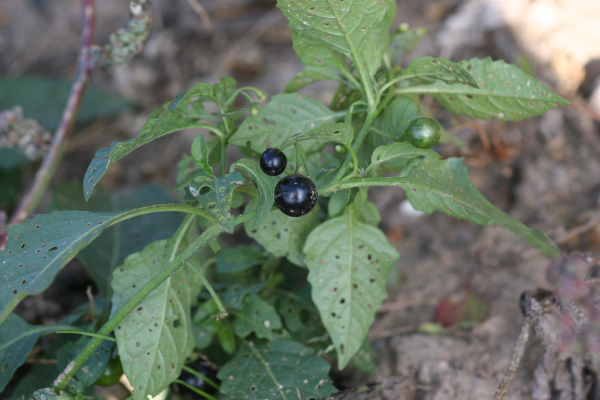
Eastern black nightshade – Solanum ptycanthum
Solanum ptycanthum Dun.
Solanaceae (Nightshade family)
MI Status
Native
Life cycle
Erect, branching summer annual.
Leaves
Seedlings have small, egg-shaped cotyledons with a pointed tip and a purplish tinge underneath followed by alternate, petiolated, simple leaves. First leaves are generally smooth, egg-shaped with wavy margins and a purplish tinge underneath; later leaves are slightly hairy, egg- to diamond-shaped with entire to irregularly toothed margins.
Stems
Erect and branching, up to 3-foot-tall stems with few hairs.
Flowers and fruit
Flowers are white to purple tinged, star-shaped with five petals fused at the base surrounding five bright yellow anthers; found in downward facing clusters. Berries are glossy black at maturity and globe-shaped, and contain up to 110 seeds.
Reproduction
Seeds.
Toxicity
All plant parts are toxic to animals.
Similar weeds
Bittersweet nightshade (S. dulcamara L.)
Differs by having a vining, perennial habit; leaves that are oval to egg-shaped with pointed tips, smooth margins and usually two basal lobes; and purple to blue flowers that yield bright red, oval berries at maturity.
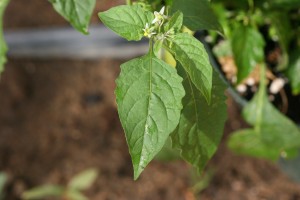
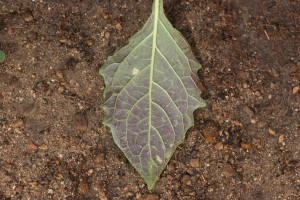
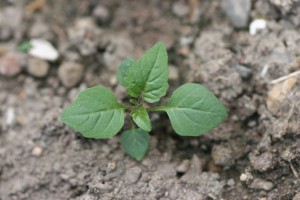
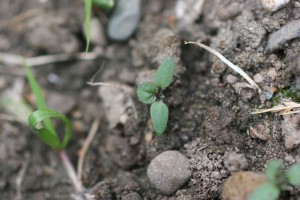



 Print
Print Email
Email




